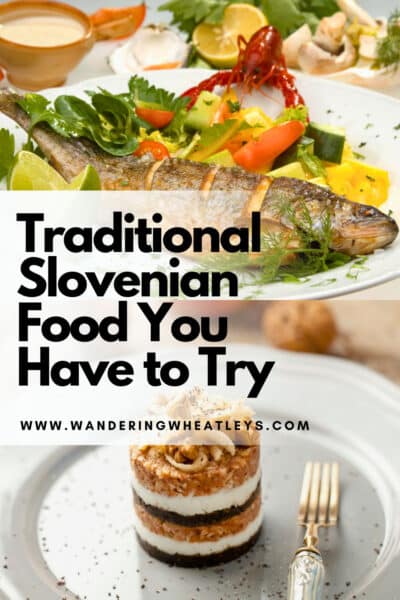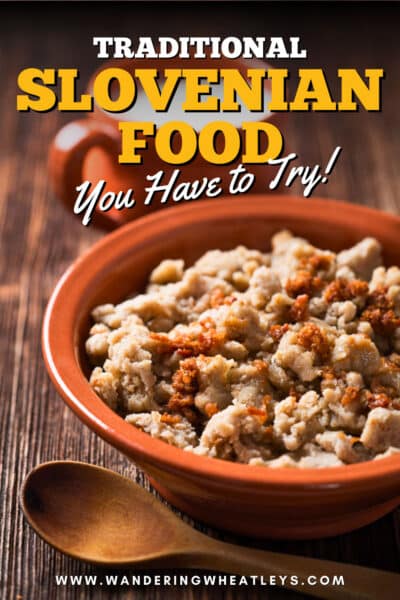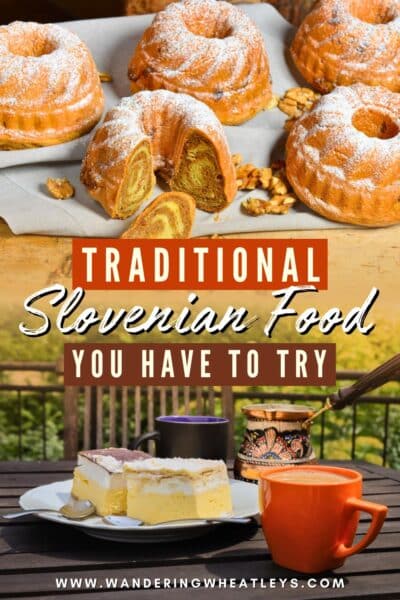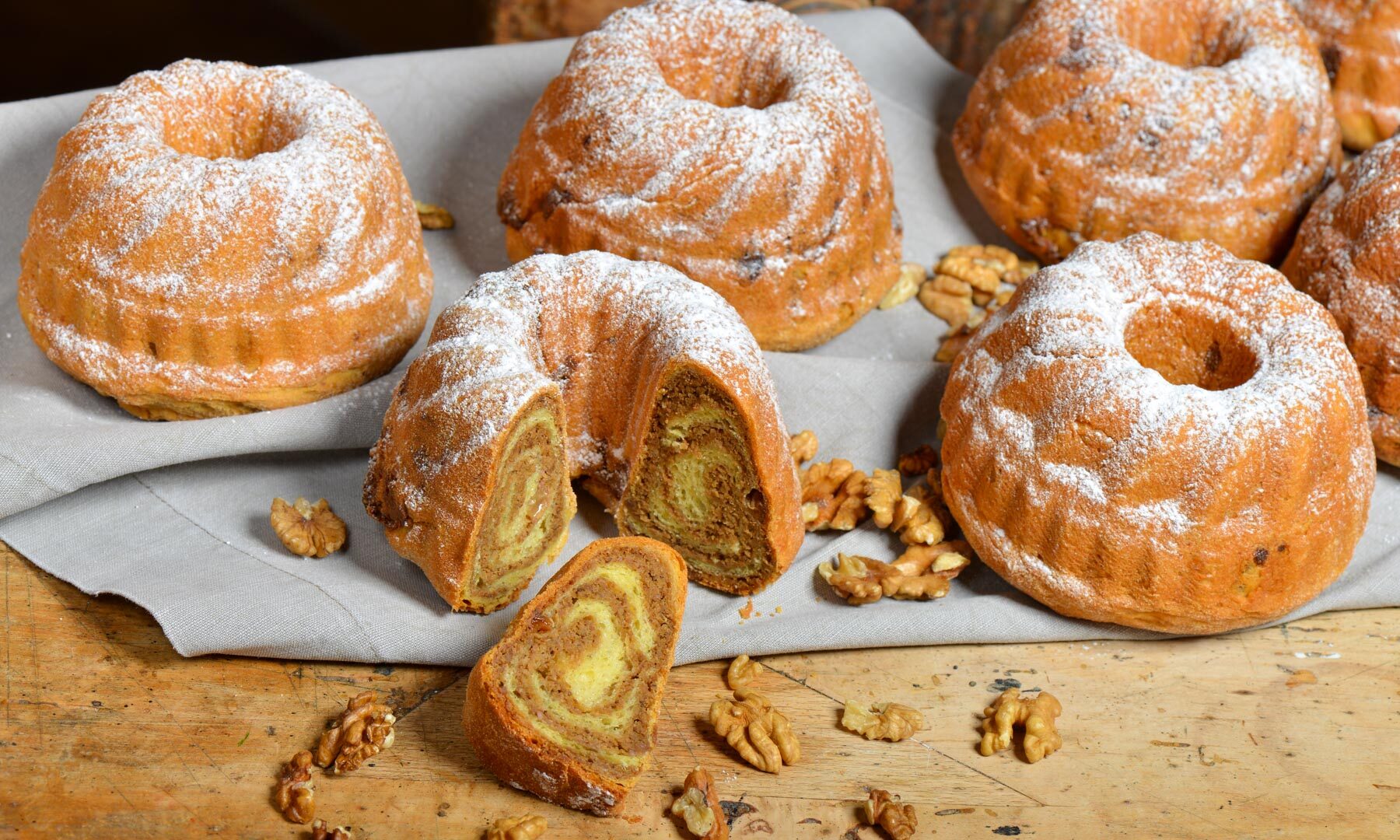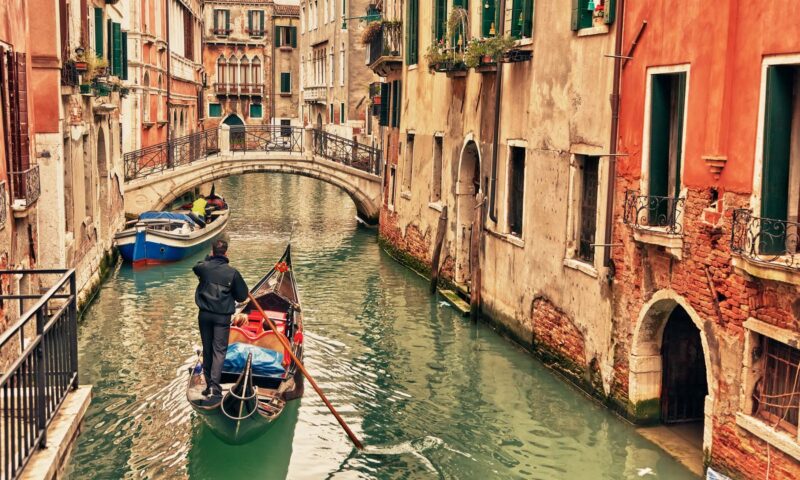Slovenia is Europe’s most surprising foodie destination. Sandwiched between Hungary, Croatia, Austria, and Italy, this small nation is surrounded by culinary powerhouses, but that just means the competition is fierce, and the culinary influences are diverse.
Slovenian cuisine has seemingly been shaped by its neighbors. Thick stews laced with paprika are reminiscent of Hungarian one-pot specialties like Goulash. Pasta, tortellini-like dumplings, and delightful broths wouldn’t be out of place over the border in Trieste, while Austrians still claim that Slovenia’s national sausage (Kranjska klobasa) is actually theirs.
With so many things to eat and drink, you might not know where to begin. That’s why we’ve compiled our list of the best Slovenian dishes for you. Try these delicious Slovenian dining recommendations, and there’s no doubt you’ll have an unforgettable time eating your way around this gorgeous corner of Europe!
Disclaimer: This post may contain affiliate links. If you make a purchase or booking through one of our links we may earn a small commission (don’t worry, it’s at no extra cost to you).
15 Delicious Slovenian Foods and Where to try Them in Slovenia
1. Simmer a Hearty Bowl of ‘Jota’ Over the Hearth
We love digging into a nation’s best comfort foods, and in Slovenia, there’s nothing more warming than a big bowl of Jota. This is the nation’s favorite soup, and it’s a wholesome mix of beans and sauerkraut that’s heavy enough to fill you to the brim on a cold winter’s day.
Jota is usually described as a soup, but it could easily be classified as a stew or a hotpot. It’s best when it’s slow-cooked all day over the stove, and every household will have its own select recipe.
In addition to the bean and sauerkraut base, you’ll typically find Jota simmered with potatoes, garlic, turnips, onions, salt, pepper, and tomatoes. You might find vegetarian versions these days, but you may also find that your bowl of Jota is flavored with bacon.
The history of Jota goes back long before Slovenia was ever a nation. The name is thought to be derived from a Latin word meaning “broth,” and the soup is particularly prevalent across the entire Istrian region, including in Italy and Croatia (where it’s often called Istrian Stew rather than Jota).
In Ljubljana, you can try an excellent homemade Jota at Julija. On Slovenia’s small portion of the Istrian Peninsula, try visiting Savor Restaurant and Wine Bar in Koper. Almost every restaurant will serve some form of hearty soup, so don’t worry too much about finding Jota during your travels!
2. Try Ajdovi žganci, Slovenia’s Humble Buckwheat Specialty
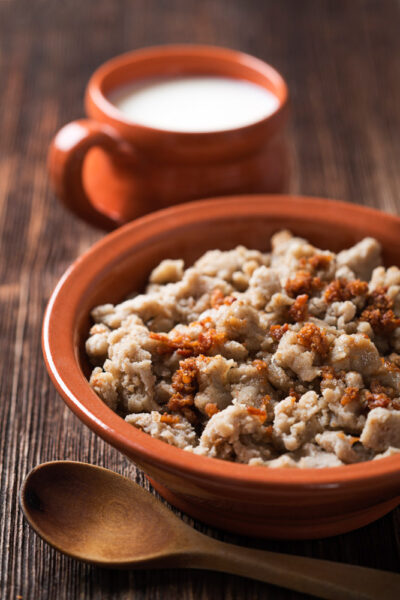
Traditional Slovenian cuisine has many different dishes that locals would consider to be “national dishes,” but Ajdovi žganci could well take the title. Ajdovi žganci has been eaten on farms, in the mountains, and in cities by Slovenians for centuries, and while historically it was always seen as the food of the poor, today it’s prepared with national significance.
Ajdovi žganci is prepared using humble foodstuffs, with the main ingredient being buckwheat flour. In times long since passed, the buckwheat flour was simply fried, then mixed with water and left to simmer, giving you a very basic but filling version of Slovenian porridge. On special occasions, Ajdovi žganci could be mixed with rarer ingredients like bacon or sauerkraut.
These days, Ajdovi žganci is still regularly prepared by Slovenians, and you’ll find it readily enjoyed in traditional restaurants across the country. It’s no longer a dish for the poor, and instead, you’ll find it on menus alongside sausages, served with cuts of meat, or sprinkled on top of soups and stews. In Ljubljana, try the Ajdovi žganci on the menu at Spajza Restaurant, a lovely eatery serving up Slovenian comfort foods.
3. Have a Kranjska Klobasa or Two
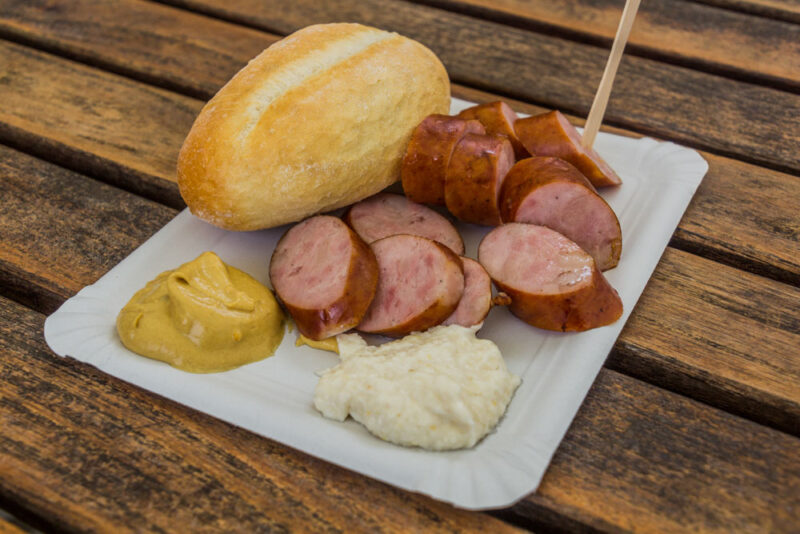
Kranjska Klobasa is one of the most traditional Slovenian foods you can try during your travels. At first glance, it looks like a humble sausage, but it’s much, much more than this.
Kranjska Klobasa is in many ways a symbol of Slovenia’s nationhood because the sausage is a traditional food from the Kranjska region, where Slovenian nationalism grew when the region was part of the Austro-Hungarian Empire. The sausage is often called the “Carniola Sausage” (another name for the Kranjska region), and it’s now found worldwide thanks to emigration (in Australia, you’ll find the “Cheese Kransky” is a popular derivative).
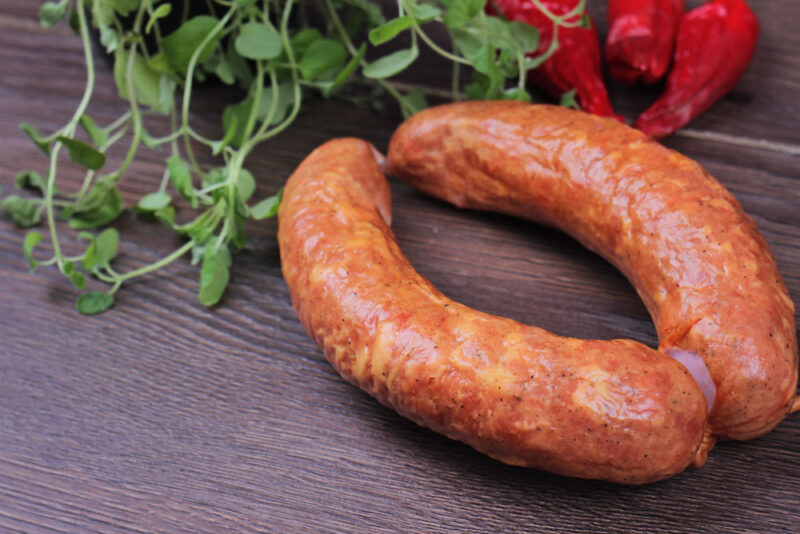
But Kranjska Klobasa holds up on the taste front, too. It’s mostly prepared using minced pork cuts, and there’s often a bit of bacon thrown into the mix. The meat is then mixed with salt, pepper, and garlic, with bonus points being awarded for any Kranjska Klobasa that’s prepared using salt harvested from Slovenia’s traditional sea salt farms on the coast. Once the sausages are ready, they’re traditionally smoked to give them that famous red hue.
Kranjska Klobasa will be for sale in all good supermarkets and butchers across Slovenia. Try Klobasarna in Ljubljana, where there’s nothing but Kranjska Klobasa on their dedicated sausage menu.
4. Pick Your Three Favorite Types of Meat for a Bograč Stew
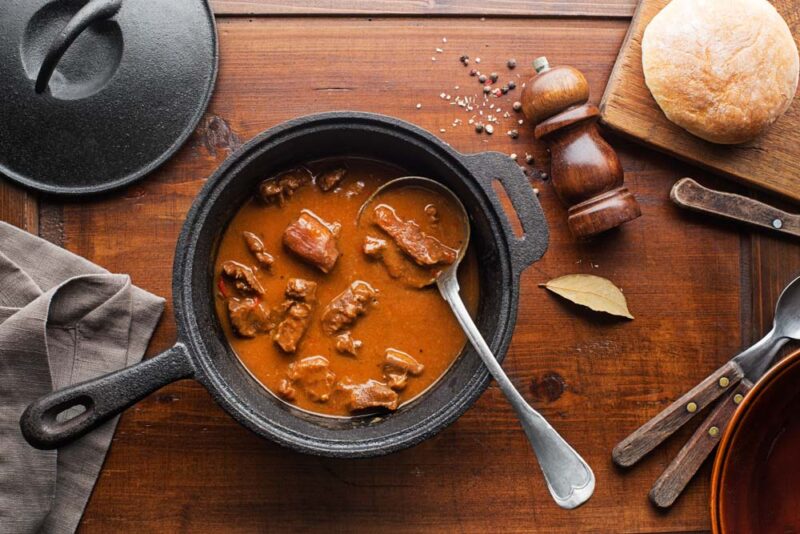
Bograč is a traditional Slovenian stew that doesn’t shy away from the meat. This isn’t one for vegetarians because Bograč is prepared using at least three different types of meat in the recipe. Pork and beef are usually included as standard, but the third (and sometimes fourth) meat varies.
Typically, this final meat is a seasonal or game meat such as venison or boar, a throwback to the dish’s origins as an outdoor stew cooked by hunters, shepherds, and anyone else living and working outside. The meat is slowly stewed with seasonal vegetables, like potatoes or mushrooms, and it’s heavily seasoned with paprika and often cooked in red wine.
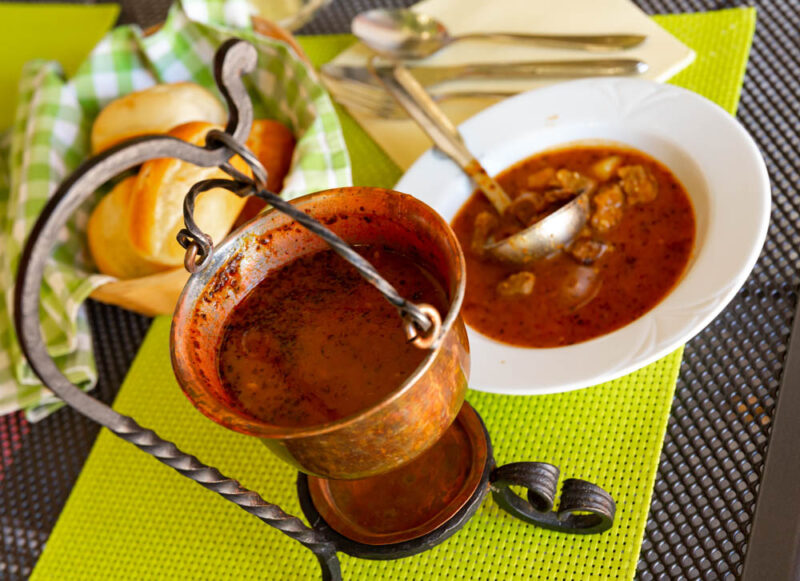
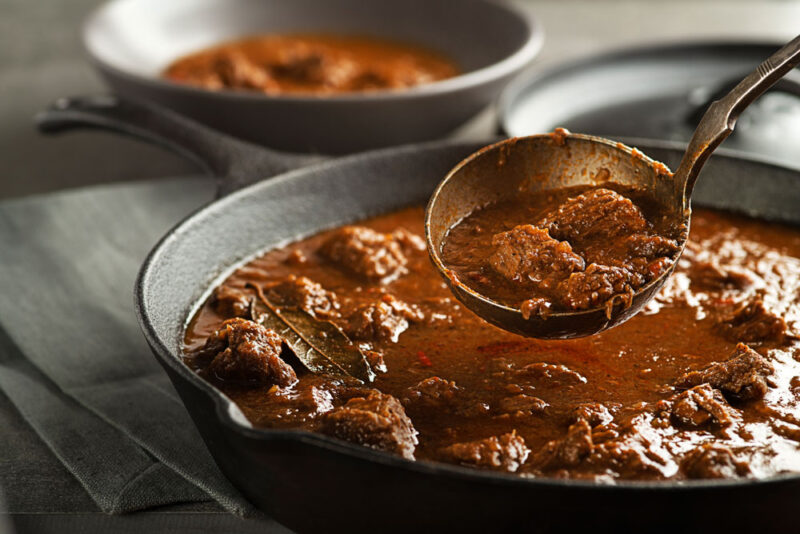
With lots of paprika, it’s clear that this hearty one-pot stew is heavily influenced by Hungarian cooking. That’s true, and the best Bograč is found in Slovenia’s northeastern provinces, where the country borders Hungary.
In centuries past, much of this region came under Hungarian control, and culinary traditions like this were adopted by the locals. Head to the town of Lendava, close to the border, where you can try some of the best Bograč in Slovenia.
5. Pretend You’re in Hungary with Golaž
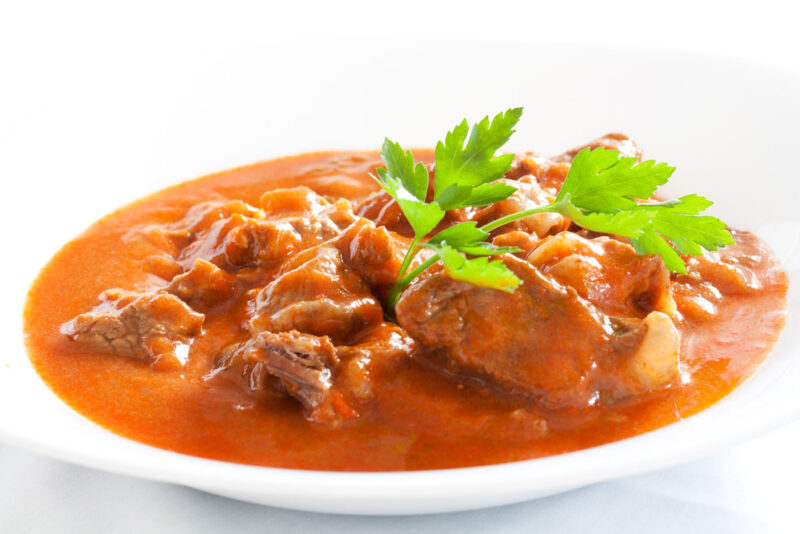
Another one of the traditional Slovenian foods of Hungarian origin that’s become a firm Slovenian staple is Golaž, which you might already know well if you’ve been traveling in Central and Eastern Europe. Golaž is the Slovenian take on (you guessed it!) Goulash, the frighteningly addictive stew that you’ll encounter across the continent.
There’s no need to explain why Golaž has become so popular – all you need to do is order a large portion and dig in to discover why this timeless dish is found everywhere in Slovenia. Like the original Hungarian Goulash, Slovenian Golaž is a delicious way to slow-cook beef. You’ll also need onions, carrots, leeks, and other seasonal vegetables, alongside red wine and paprika.
The beef and onion are braised before the Golaž is left to slowly simmer in its delightfully rich sauce until everything is tender. Serve with bread, dumplings, or even pasta when you’re in Slovenia. In Ljubljana, head to Gostlina Sokol, an old restaurant dating back to the 19th century, for some seriously Slovenian Golaž.
6. Dig into Štruklji, Slovenia’s Best Dumplings
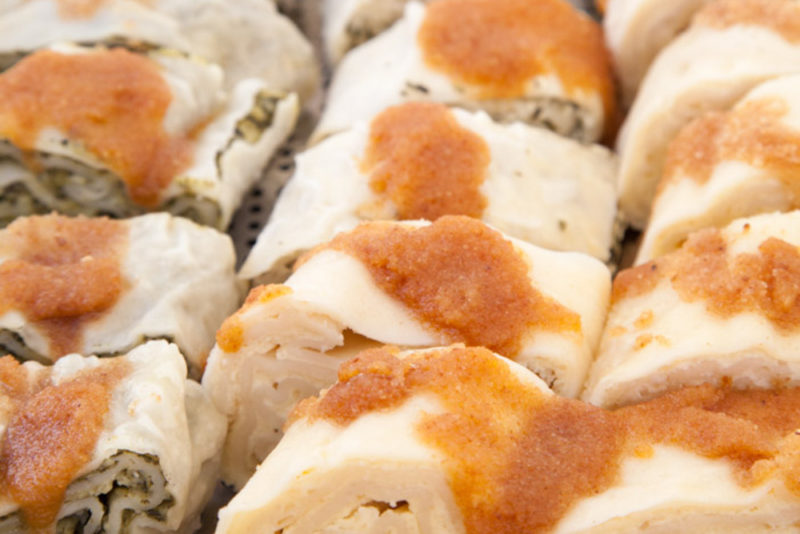
Who doesn’t love dumplings? We have a super soft spot for any and all types of dumplings, and if you’re like-minded, then you’ll want to order yourself a big plate of Štruklji when you arrive in Slovenia.
Štruklji is prepared using a unique type of filo pastry that’s peculiar to Slovenia. The pastry is often made from buckwheat, although the exact ingredients, style, and shape of Štruklji vary dramatically from one region to another. You’ll often find Štruklji prepared using potato or wheat flour, for example, while the fillings can be either sweet in nature or savory in taste.
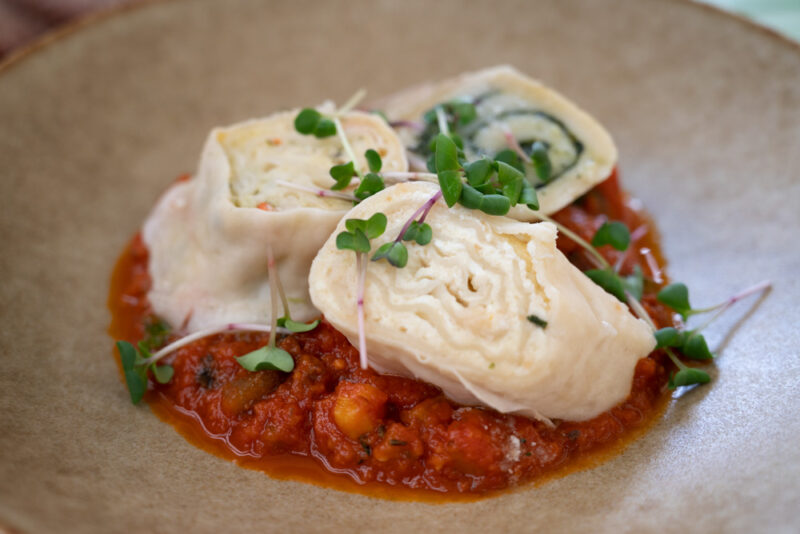
Traditionally, Štruklji were prepared as a festive treat, and we absolutely love how Slovenians prepare these tasty dumplings for Christmas. But they’re just too good to only be eaten once a year, and these days, Štruklji are prepared throughout the year and ever-present on the menus at restaurants throughout the country.
Popular fillings are as varied as cheese, meat, apple, and tarragon, and the Štruklji is often prepared as one large dumpling-like roll before being cut up into smaller slices. You’ll love the menu at Moji Štruklji Slovenije (My Dumplings of Slovenia), an eatery dedicated to all things Štruklji in Ljubljana.
7. Fall in Love with Idrijski žlikrofi, Little Parcels of Dumpling Joy
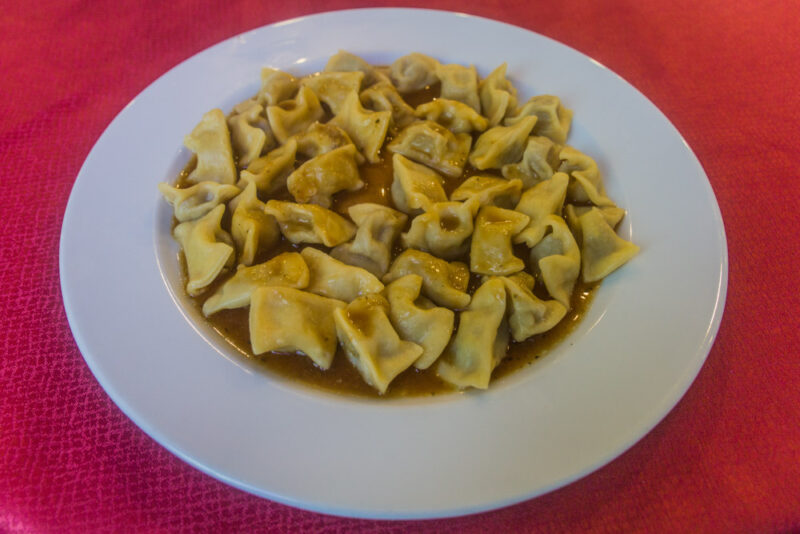
Slovenians are partial to a good dumpling, which is one of the big reasons why we love eating our way around this petite European nation. In western Slovenia, the local culinary specialty is Idrijski žlikrofi, a delicious filled dumpling that became the first Slovenian dish to be awarded protected geographical status within the European Union back in 2010.
The awarding of this coveted status to a humble dumpling showed just how popular this regional delight was, and not just in its hometown of Idrija – but all over Slovenia. Idrijski žlikrofi are little parcels of joy prepared using an egg, flour, and milk dough that’s rolled into bite-sized morsels with distinctive shapes.
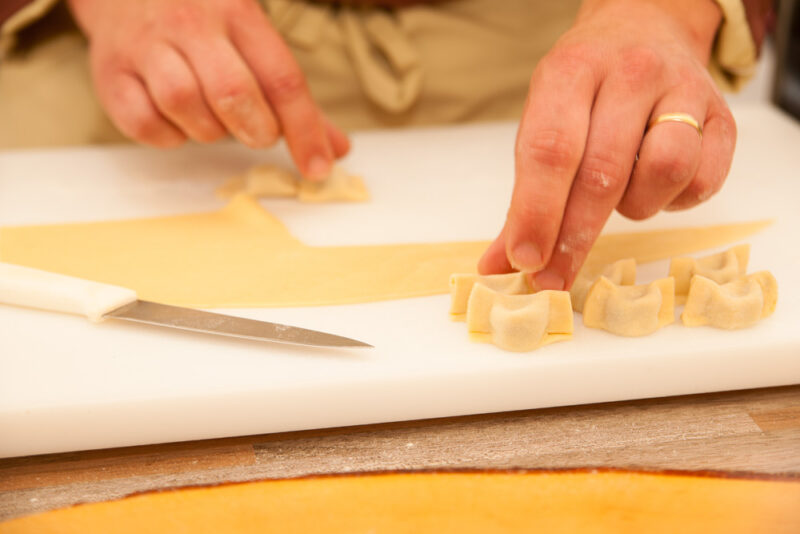
The filling is a traditional ensemble of potatoes mixed with onions, chives, marjoram, and pork crackling. The filling is precooked, and once the dumplings have been assembled, they’re lightly boiled until they rise to the surface of the cooking pot. Idrijski žlikrofi is typically enjoyed as part of a stew or ragu, where it almost plays the role that pasta does in Italian cuisine.
The best Idrijski žlikrofi is, without a doubt, found in the dish’s hometown, Idrija, where you’ll find wonderful home-cooked dumplings in all the local restaurants. If you don’t make it to Idrija, then try Julija restaurant in Ljubljana.
8. Fish Out a Trout from the River Soča
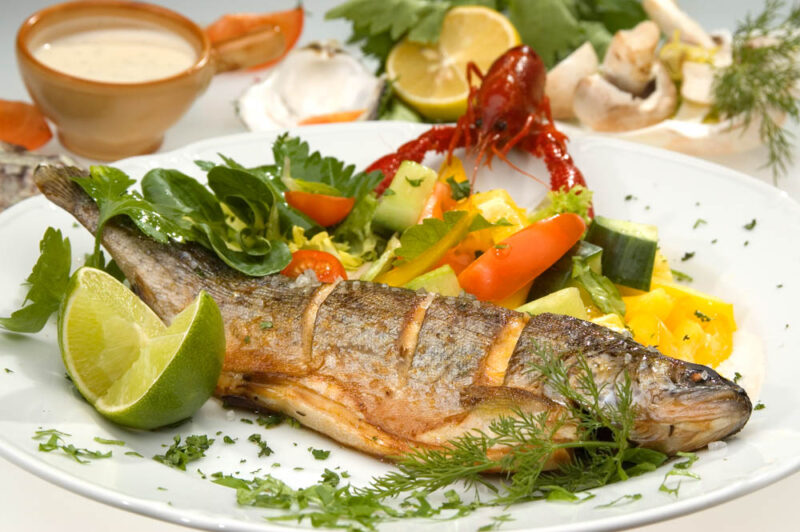
Slovenia might only have a small stretch of coastline along the Adriatic Sea, but that hasn’t stopped fish from becoming a national staple. Except, once you travel away from Istria, you’ll find that it’s not seafood on the menu, but river trout.
Slovenia’s alpine lakes and glorious rivers are home to large populations of freshwater trout, which make for one of the nation’s most beloved delicacies. Trout is traditionally baked or grilled once it’s been given a light coating of buckwheat (another traditional Slovenian ingredient) before being served with seasonal vegetables like potatoes, turnips, or leeks.
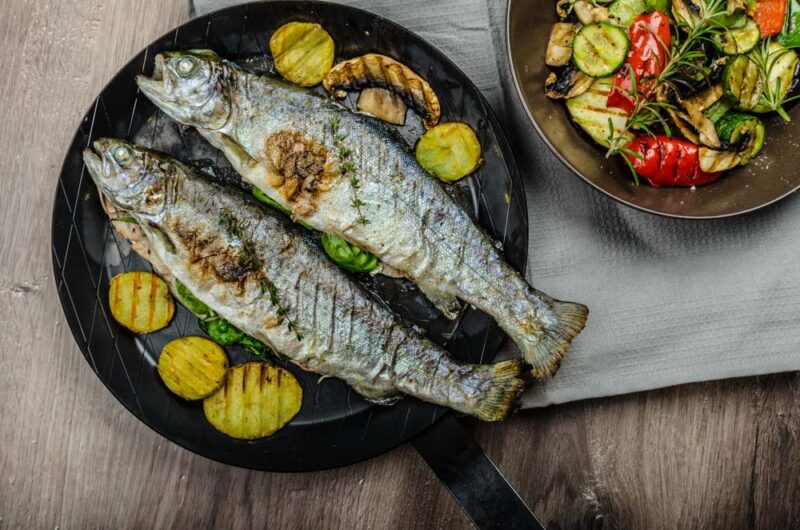
In the past, the Soča trout from the Soča Valley was the most prized fish in Slovenia. This is a species of marble trout, but unfortunately, the introduction of other trout species led to its decline. Instead, you’ll find rainbow trout on menus, but the best place to order is still in the Soča Valley, where they know how to bake a mean trout!
9. Prepare Fresh Fritaja in the Spring
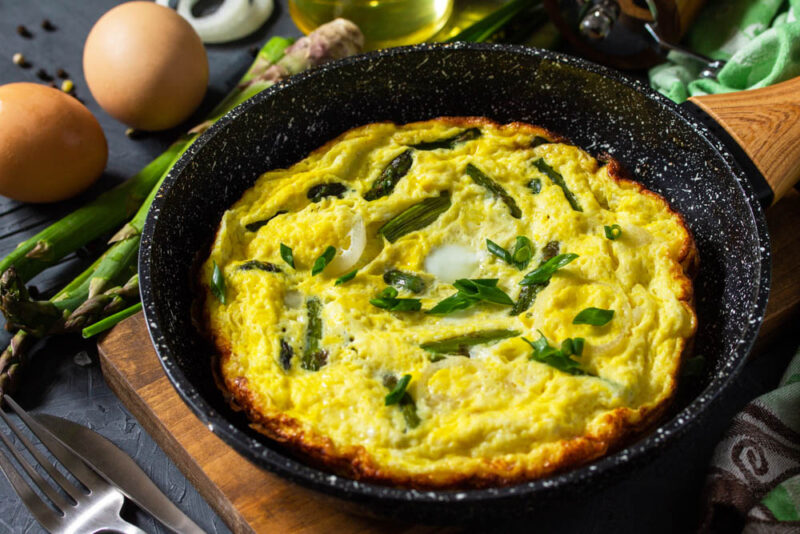
Spring is the season for the freshest herbs and vegetables, and Slovenians put asparagus, garlic, mint, tomatoes, mushrooms, and much more to good use in the preparation of Fritaja, a truly delightful Slovenian food. You’ll need plenty of eggs, too, because Fritaja is Slovenia’s delicious springtime omelet!
Fritaja means to fry, and the simplest recipe only requires eggs, olive oil, asparagus, and a little salt and pepper. Everything is mixed together, then allowed to set in the frying pan. Fritaja is often mixed with a little pancetta and might be served with polenta or bread.
While it’s popular all over Slovenia, the best Fritaja originates in the traditional region of Slovene Littoral, which includes areas in Istria. Visit the Vipava Valley in spring, for example, and you’ll have the freshest Fritaja served with wild asparagus and foraged herbs to enjoy.
10. Save Your Offal for Obara
Another hearty, hearty stew to dig your spoon into after a day of hiking in the Julian Alps is Obara. This one-pot dish is a classic of Slovenian cooking, with a recorded history dating back as far as the 15th century when the first instances of Obara being cooked up were recorded in the Carniola Region.
The first Obara was possibly cooked with dormouse, a variety you’re unlikely to find being served up today. However, you might still find the main ingredients in the stew to be rather unusual at times. That’s because Obara is one of those dishes that traditionally attempted to use up all of the leftover parts of an animal, including all of those internal organs that would otherwise go to waste!
Offal was always the key ingredient, but Obara was rare to see served on anything other than a special occasion. The offal would be cooked alongside other cuts of beef, pork, or chicken and stewed with seasonal vegetables like turnips, beans, onions, and potatoes.
These days, the use of offal is less likely, and you’ll even find that Obara can be served in restaurants as a completely vegetarian dish. While it’s eaten much more frequently, it’s still often reserved as a traditional Sunday dinner in Slovenia!
11. Visit Lake Bled for the Cake
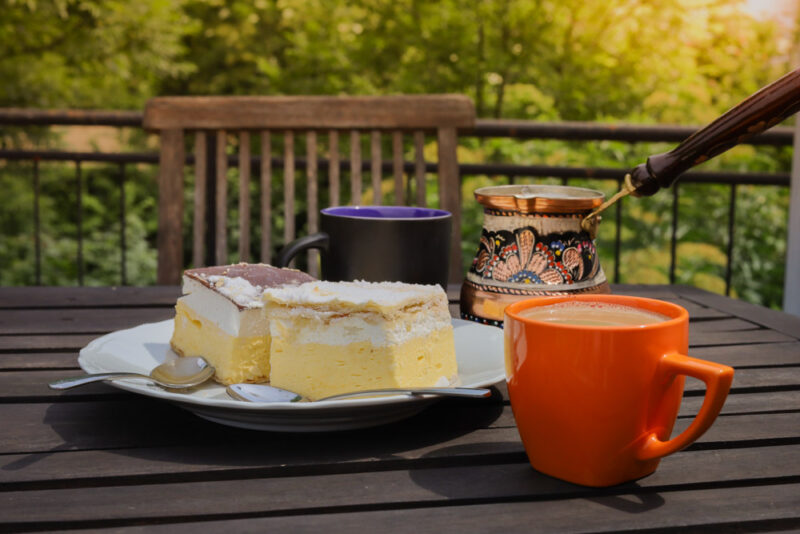
When you first arrive on the serene shores of Lake Bled, you’ll be mesmerized. The still water shimmers like a watercolor painting while a 52-meter-tall church spire rises above the lake from its unusual perch on a secluded island. Drag your eyes away from one of Slovenia’s most picturesque scenes just for a moment because that’s all the time you need to fall doubly in love with Bled Cake.
After the view, the cake is the next best reason to visit Lake Bled. This creamy cake delight is called Blejska Kremna Rezina in Slovenian, although the locals will know what you want when you order a slice of Bled Cake. It’s a local delicacy that was indeed created here, right around the lakeside, with legend attributing its creation to the head patisserie at Hotel Park.
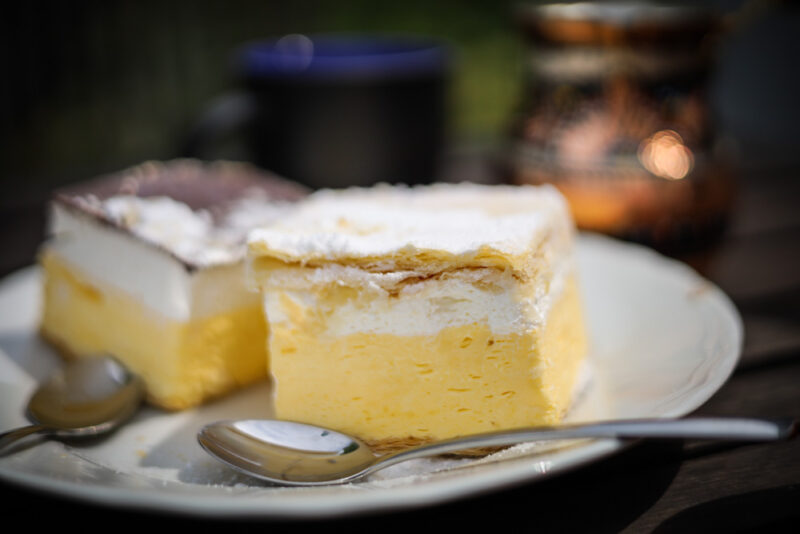
Ištvan Lukačević is said to have developed the recipe in 1953 when he blended together an unhealthy quantity of eggs, milk, flour, cream, and sugar into a delightfully decadent cream cake that’s since become one of the best Slovenian desserts.
The finished product is wonderfully spongy, with distinct layers of dough and cream creating an unbeatable texture that’s finished off with copious quantities of caster sugar for good measure. You can still try the original recipe at Kavarna Park on the lakeside, where they claim to have prepared tens of millions of Bled Cakes since the 1950s.
12. Gorge on Potica at Christmas Markets
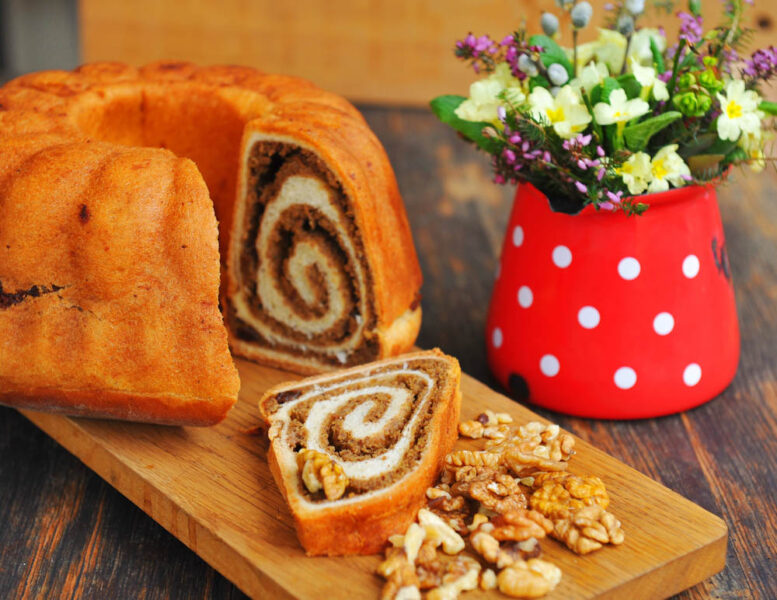
Festive occasions call for festive treats, and in Slovenia, there’s nothing that can quite match Potica. One of the most delicious Slovenian desserts, this special nut roll is served at Christmas and Easter time, and it’s a wonderful culinary tradition that’s thought to date back hundreds of years.
Potica is prepared with a thick, sweet dough that’s rolled up into a log-like shape. In between the dough, layers of delicious cinnamon, walnut, and raisin fillings are tightly packed into the log, giving the Potica wonderfully colorful swirls that you’ll see vividly when it’s sliced up after baking.
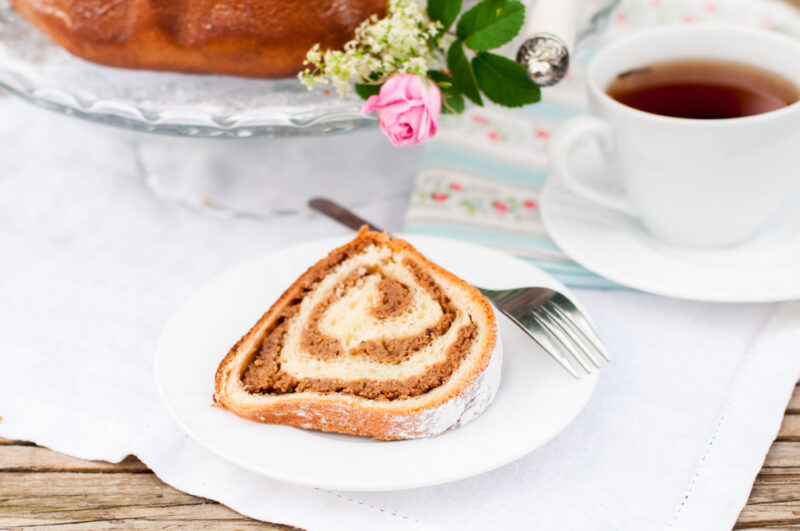
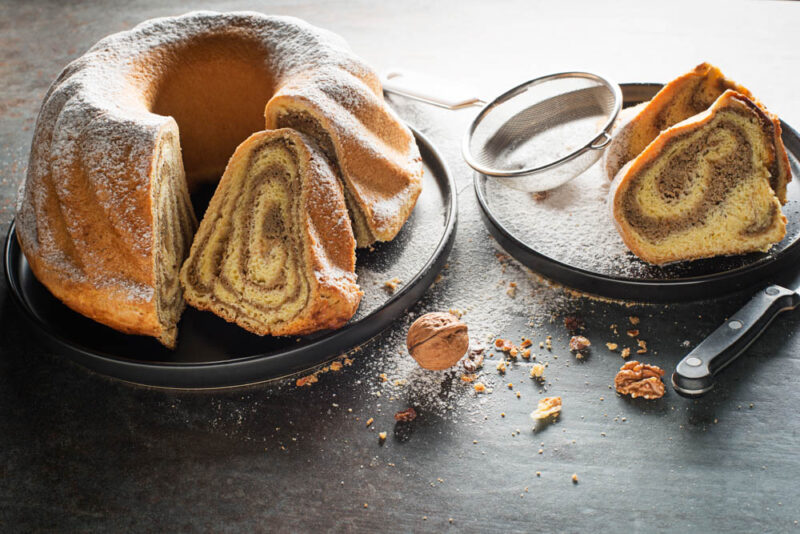
This festive treat is served to family and friends on special occasions, but you’ll also find it for sale at Christmas and Easter markets. If you’re visiting Slovenia in the right season, you’ll smell the sweet, nutty aroma of baked Potica as you explore local markets, with Ljubljana and Maribor hosting the best and largest festivities in the country.
13. Dig Deep into the Layers of Prekmurska Gibanica
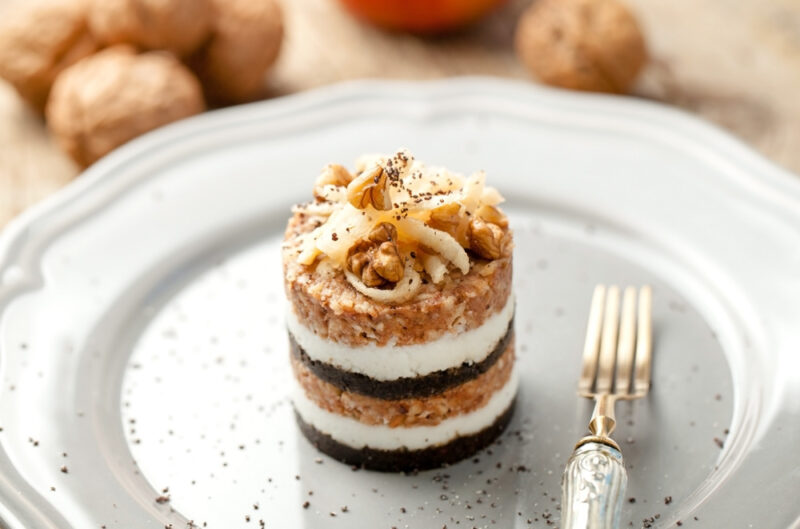
A good layer cake is never difficult to find in Slovenia and one of the best-loved pastries you’ll find on your travels is Prekmurska Gibanica. This hefty cake is a national specialty, and like many Slovenian desserts and cakes, it was traditionally prepared for special or festive occasions.
You don’t need to be celebrating to enjoy it these days, and you’ll find the delightful layers of poppy seeds, walnuts, raisins, apples, and quark cheese make for an excitingly refreshing filling. Traditionally, the fillings are all kept distinct and separate, so you’ll bite into a layer of poppy seed filling before tasting the cheese.
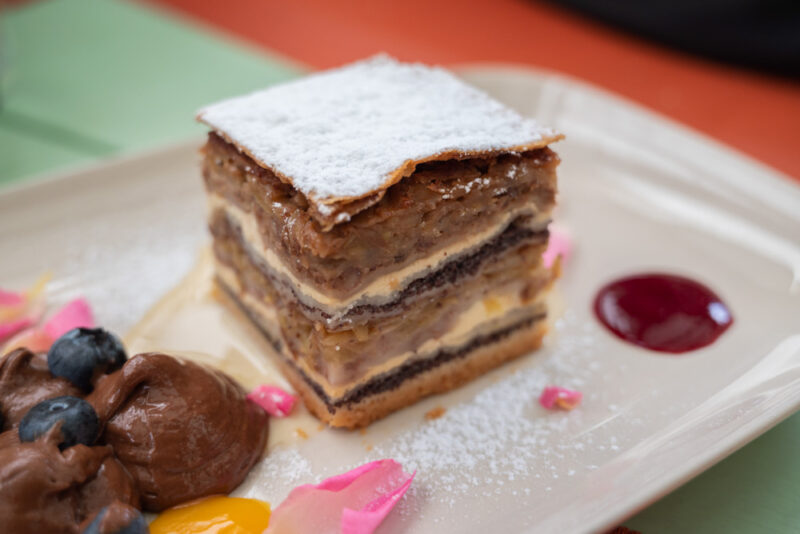
Prekmurska Gibanica is typically served as a dessert with an added layer of cream to finish it off. The cake originated in eastern Slovenia, where culinary influences from Hungary are readily apparent in the Prekmurje region. This is still the best place to try authentic Prekmurska Gibanica, although you’ll find it for sale in bakeries, cafes, and restaurants across Slovenia.
14. Bake Braided Bosman Bread for Special Occasions
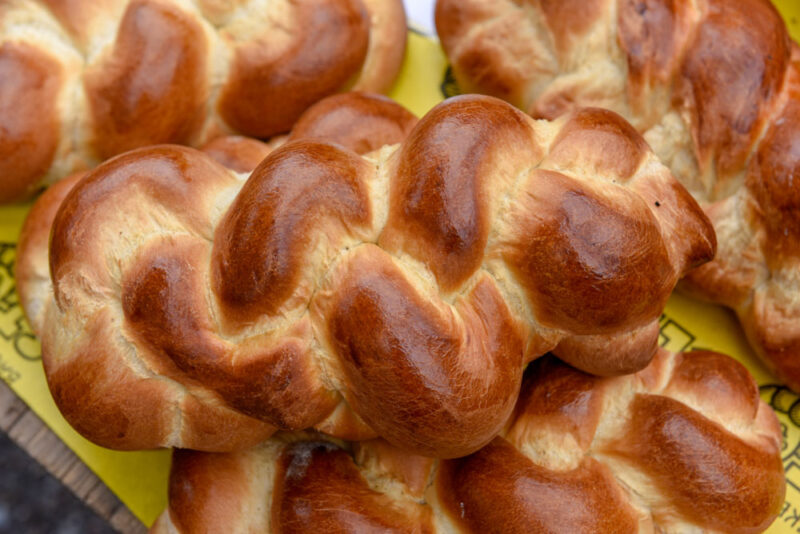
Bosman is a unique type of bread that you’ll find is given as a gift at ceremonial occasions in Slovenia. Bosman is best described as “braided bread” because of the intricate, woven design that’s found on the exterior.
It takes serious skill and technique to fold the dough so that it’s perfectly braided in traditional patterns, and it’s a real beauty to behold. You’ll recognize Bosman bread from this unique design, which makes it stand out across the kitchen.
Because of the cultural importance of Bosman, which was traditionally handed over to a bride at the wedding or given as a gift when a child was Christened, you’ll likely only get to see it if you’re invited to a special occasion. If you want to try it, then your best bet is to start making friends while you’re in Slovenia!
15. Tour through Slovenia’s Wineries
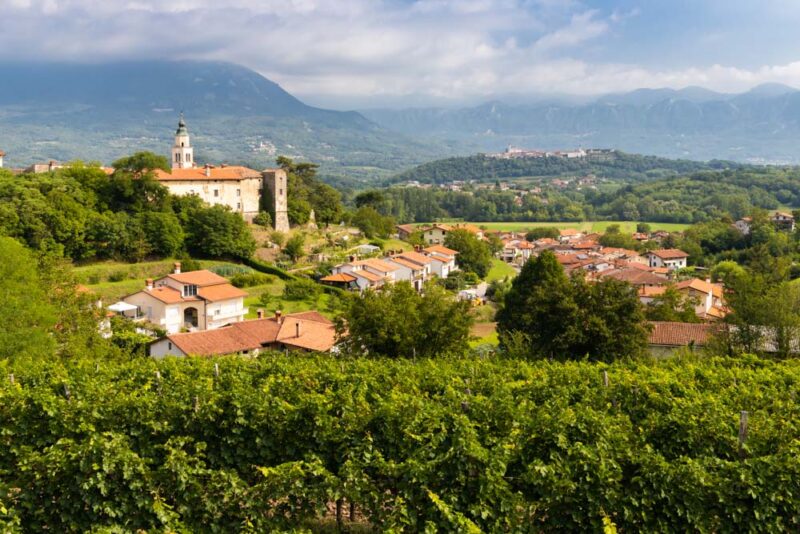
Slovenian wines aren’t exactly well known, so it might surprise you to learn that the region has been a flourishing center of viticulture since ancient times. Wine production here began before even the Romans had arrived, making wine production one of the oldest trades in the country.
The rich traditions continue in Slovenia’s three distinct wine-growing regions, which are gifted with a mild Mediterranean climate, rich soils, and unique, local production methods honed over centuries.
In Primorska, you’ll find beautiful wineries lining Slovenia’s Istrian coastline, then reaching inland into the Vipava Valley and the Karst region. Wines here are fueled by the Mediterranean climes and Adriatic sea winds, with relentless sunshine making this one of Europe’s most fertile wine cultivation areas.
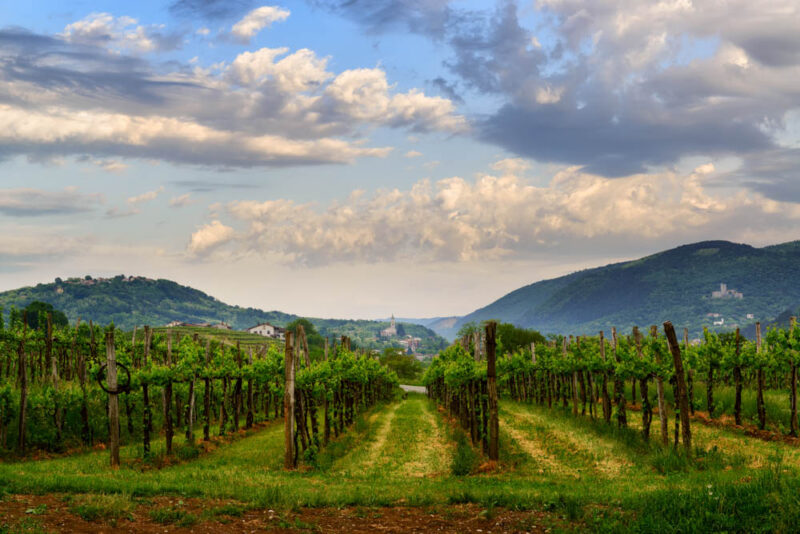
In the east of Slovenia, you have the Podravje wine-growing region, which is centered around Prekmurje and Stajerska Slovenija. This is the largest wine-growing region in Slovenia, with a climate that produces beautiful white wines to rival anywhere else in Europe.
The third wine-growing region is Posavje, where sweet and sparkling wines are the product of small-scale vineyards where soils are fed and nurtured by the River Sava. Slovenian vineyards number in the tens of thousands, so why not join a wine tour to learn more?
There you have it! The 15 best traditional Slovenian foods to try in Slovenia. What’s your favorite Slovenian food?
SHARE THIS ON PINTEREST
